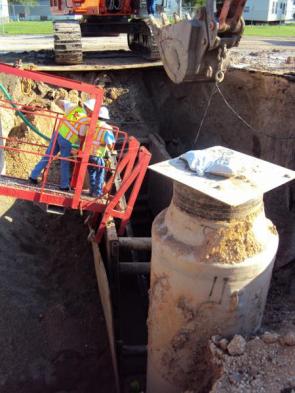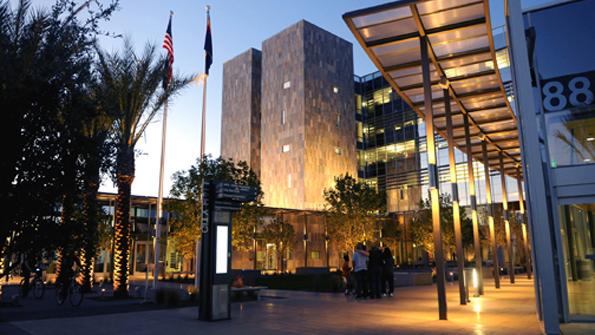America’s Crown Communities 2011
What is in this article?
- America’s Crown Communities 2011
- Schools Recycling Partnership Program (Cathedral City, Calif.)
- Chandler City Hall (Chandler, Ariz.)
- Wastewater Collection System and Wastewater Treatment Plant Expansion (Pharr, Texas)
- Vacant Property Management Strategy (Philadelphia)
- City Hall Fellows (San Francisco)
- Health District Consolidation (Summit County, Ohio)
Wastewater Collection System and Wastewater Treatment Plant Expansion (Pharr, Texas)
 More than a decade ago, Pharr officials realized their wastewater collection system had deteriorated and their wastewater treatment plant had reached capacity. In 2005, the city developed its first wastewater master plan using a $400,000 grant from the Border Environment Cooperation Commission (BECC). The plan called for improving the wastewater collection system to curtail inflow and infiltration and eliminate sanitary sewer overflow, as well as expanding the wastewater treatment plant to keep up with residential and commercial growth. However, both projects would cost almost $70 million.
More than a decade ago, Pharr officials realized their wastewater collection system had deteriorated and their wastewater treatment plant had reached capacity. In 2005, the city developed its first wastewater master plan using a $400,000 grant from the Border Environment Cooperation Commission (BECC). The plan called for improving the wastewater collection system to curtail inflow and infiltration and eliminate sanitary sewer overflow, as well as expanding the wastewater treatment plant to keep up with residential and commercial growth. However, both projects would cost almost $70 million.
“The future of the city depended on revamping the wastewater collection system and adding capacity to the wastewater treatment plant,” says David Garza, assistant city manager. “Sanitary sewer overflow was evident after each rainfall for approximately three to four days after it finished raining, so the well-being of the citizens was a priority. Besides the public health, our system could not handle the residential or commercial growth within our city. The revamping of the wastewater system and treatment plant was for the well-being of the current and future residents of Pharr, and to continue to sustain the economic growth of our city.”
Pharr is home to 72,000 residents with a median household income of $24,000 and a 35 percent poverty rate. Funding the wastewater projects was a challenge, but the city received two more grants from BECC and the North American Development Bank for $500,000 and $200,000, respectively. Next, the city had to garner support from residents and the city council and raise water and sewer rates for more funding to complete the project. The city formed a seven-member steering committee to help secure public participation, and its members conducted 22 presentations to civic organizations and PTA groups and distributed letters to parents of schoolchildren, which increased support for the project. Using that support, city leaders convinced elected officials to raise rates. Seeing the progress the city had made securing local funds, the North American Development Bank and the U.S. Environmental Protection Agency each gave the city additional grants amounting to nearly $20 million.
The economic downturn also helped, as bids came in lower than expected, and the five-phase project was completed for $57.4 million. “With our last major rainfall this past July 2011, it was determined that the new collection system and treatment plant were successes,” Garza says. “No sanitary sewer overflow was reported. Our capacity at the treatment plant is now capable of handling the additional residential and commercial growth within our city. [Through these projects], the city is now capable of servicing our residents, including the protection of public health and economic growth.”
















